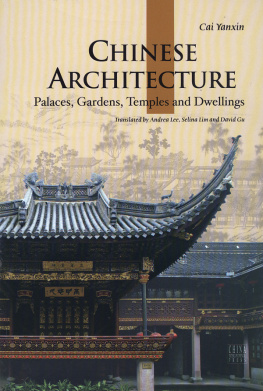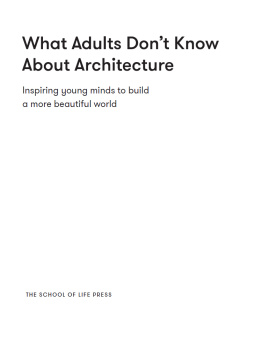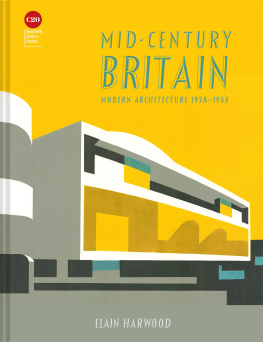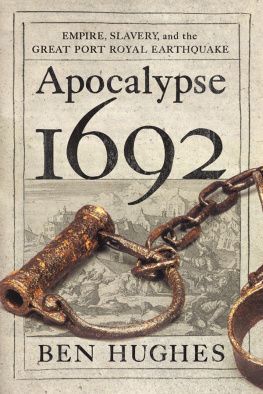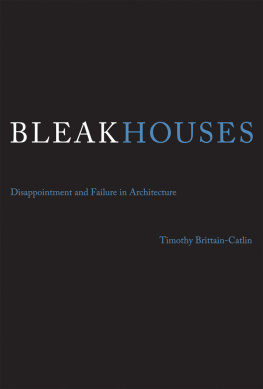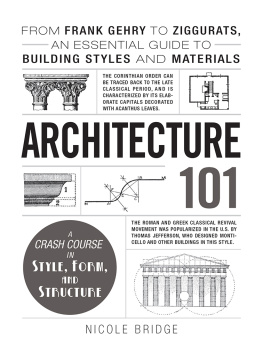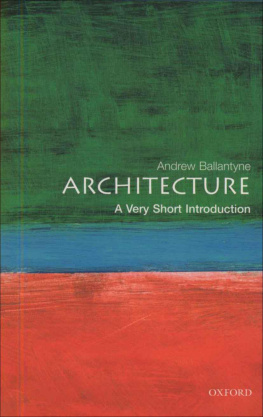Architecture and Empire in Jamaica
Architecture and Empire in Jamaica
Louis P. Nelson

Published with assistance from the Annie Burr Lewis Fund.
Copyright 2016 by Louis P. Nelson
All rights reserved.
This book may not be reproduced, in whole or in part, including illustrations, in any form (beyond that copying permitted by Sections 107 and 108 of the U.S. Copyright Law and except by reviewers for the public press), without written permission from the publishers.
yalebooks.com/art
Designed by Leslie Fitch and Tina Henderson
Printed in China through Oceanic Graphic International, Inc.
Library of Congress Control Number: 2015930491
ISBN 978-0-300-21100-9
eISBN 978-0-300-21435-2
A catalogue record for this book is available from the British Library.
This paper meets the requirements of ANSI/NISO z39.481992 (Permanence of Paper).
10 9 8 7 6 5 4 3 2 1
Jacket illustrations: (front) Pierre Eugne du Simitire, Triumphal Arch at the Decoy (detail of fig. ).
Frontispiece: Colbeck Castle ().
Dedicated to the people of Jamaica
Contents
Acknowledgments
It is with a great debt of gratitude that I cross the finish line on this book. Begun more than five years ago, this book has benefited from conversations with an extraordinary array of colleagues, friends, students, librarians, archivists, and others. I have done my best to cover them all below, but certainly there are some Ive overlooked.
This book was born from a longstanding commitment to the field analysis of everyday architecture, which in this instance took the form of a summer field school held on the north coast of Jamaica every summer for almost a decade. Over the course of those summers, more than one hundred students traveled with me to live in Jamaica for a month spending days recording historic architecture and nights swatting mosquitos. I would like to thank them each by name: Jasper Adams, Jesse Adams-Doolittle, Sara Anderson, Stephanie Arbieto, Hunter Armstrong, Sela Bailey, Hannah Beckman, Katherine Boles, Eryn Brennan, Sarah Brummett, Kristin Buchanan, Stephanie Burcham, Margaret Burke, Sam Carr, David Casteel, Alisha Clark, Jonathan Coble, Robert Cox, Katherine Cullinan, Colin Curley, Anna Danz, Erika deBroekert, Eduardo Diaz-Etchevehere, James Dunnigan, Sarah Eissler, Elizabeth Engel, Adam Erby, Robert Erickson, Tahinee Felix-Marin, Stephanie Fernandez, Jason Fox, Marina Freckmann, Laura Frye, Molly Garfinkel, Mike Goddard, Grace Goldstein, Jennie Graves, Margaret Hansen, Jennifer Harris, Ethan Heil, Kristen Hennings, Rachel Himes, Rachel Jessup, April Johnson, Matthew Jungclaus, Katie Klepper, Kosova Kreka, John Kupstas, Erin Kuykendall, Anna Kvan, Alexandra Lauzon, Lawrence Lazarides, Tran Le, Yun-Fong Lin, Jennifer Lindblom, Jordan Matthews, Todd Mattocks, Lindsay McCook, Molly McDonald, Meagan McFadden, Maureen McGee, Elizabeth McGinley, Meghan McLoone, Francis McMillen, Elizabeth Milnarik, Amy Moses, Noel Mukubwa, Effie Nicholaou, John OHara, Jennifer Pack, Camila Quinteros-Casaverde, Philip Redpath, Kelsey Reynolds, Elizabeth Rice, Julie Robert, Rachel Robinson, Jerold Rosema, Alison Ross, Blythe Rowe, Kedryn Samson, Maria Sanchez-Carlo, Tommy Schaperkotter, Lauren Shepulski, Richard Sidebottom, Charles Smith, Deborah Smith, Kathleen Smith, Kristen Sparenborg, Mark Stephongzi, Todd Stovall, Jackie Taylor, Jessica Terdeman, Anh Thai, Katherine Thaxter, Sarah Thomas, Kimberly Toney, Alyssa Turner, Jessica Underhill, Jessica Vanecek, William Watkins, Leah Werner, Christoph Wilhelm, Michael Wsol, Steven Yena, and Chris Young. Among these students, a handful played critical roles as research assistants and colleagues. Hayden Bassett, first an undergrad on the field school and now a Ph.D. student at William and Mary, has read numerous chapters of this book and offered very useful feedback and criticism. Brian Cofrancesco played a critical role in helping to organize the research that undergirds this book. Emilie Johnson, Edward Barnes, Whitney Martinko, Ivor Connelly, and Josi Ward were an extraordinary research team, and they are all important scholars with very promising futures. And, of course, I am especially grateful for the summers spent in the field with Ed Chappell, whose commitment to the careful recording of historic architecture is surpassed by none.
The chapter structure of this book began to emerge in a seminar on the architecture of the Caribbean that I offered at the University of Virginia in the fall of 2010. Those students played such an important role in helping me to think through the organization of this material that Id like to thank them as well: Kate Crawford, Jamie Frieling, Gray Graham, Ben Hays, Stephanie Langton, Ed Barnes, Laurin Goad, Justin Grieving, Katy Lassdow, Kristin Rourke, and Doug Sefton.
The final push to produce the book would not have been possible without the extraordinary contributions of Jason Truesdale and Zhifei Cheng, both of whom produced drawings and illustrations, and, especially, of Mike Mitchell, who gave a year of his life to this book managing illustration permissions, editing endnotes, building a bibliography, and responding to my never-ending curveball requests.
The book has also benefited from the extraordinary support of a number of Jamaicans who remained committed to supporting my research. Valerie Facey has been a longstanding cheerleader, champion, and colleague in the effort to understand Jamaicas architectural heritage. The same is true of Ivor Connelly and Kevaughn Harding. Without enthusiasm and encouragement from these three Jamaicans, this book would not have happened.
Of course, the research was supported by institutions and their staff and faculty in the United States, in the Caribbean, and in Britain. The invitation to spend the eight months of the 201112 academic year at the Rothermere American Institute at Oxford University as a research fellow gave me the time to produce the first drafts of many chapters. I am also indebted to the librarians, curators, and archivists of the following institutions: Archives of Jamaica; Bodelian Library; Bristol Museum and Art Gallery; British Library; Cambridgeshire Archives; Glasgow City Archives; Huntington Library; Institute of Jamaica, Island Record Office; Jamaica National Heritage Trust; Lewis Walpole Library; Library of Congress; National Gallery of Jamaica; National Library of Jamaica; National Maritime Museum; National Museums Liverpool; Pierpont Morgan Library; Public Record Office, Kew; UVA Special Collections; Victoria and Albert Museum; West Indies Collections of uwi Library; and the Yale Center for British Art. I am especially indebted to the private owners of the Storer Sketchbook and the DSimitiere sketches for allowing me to carefully study and to publish these incredibly important visual sources.
And various chapters benefited from feedback after presentations to the following: American Society for Eighteenth Century Studies; Department of Art History at the College of William and Mary; Department of Art History at the University of Delaware; Department of History of the University of Ghana, Legon; Early American Seminar at the University of Virginia; Georgian Society of Jamaica, London; John Carter Brown Library; Oxford University Architectural History Seminar; Rutgers British Studies Center; Savannah Symposium; and the Society of Early Americanists.
The shape of this book and the quality of its insights and arguments were all vastly improved by the contributions of colleagues in the field. I am indebted to each of the following for reading various chapters of this book and providing helpful feedback: Alex Bremner, Cary Carson, John Crowley, Douglas Fordham, Maurie McInnis, James Robertson, and Dell Upton. Worthy of very special mention is Robert Barker, whose indefatigable commitment to exacting research and his encyclopedic knowledge of eighteenth-century Jamaica was enormously helpful in the research and writing of this book.
Next page

